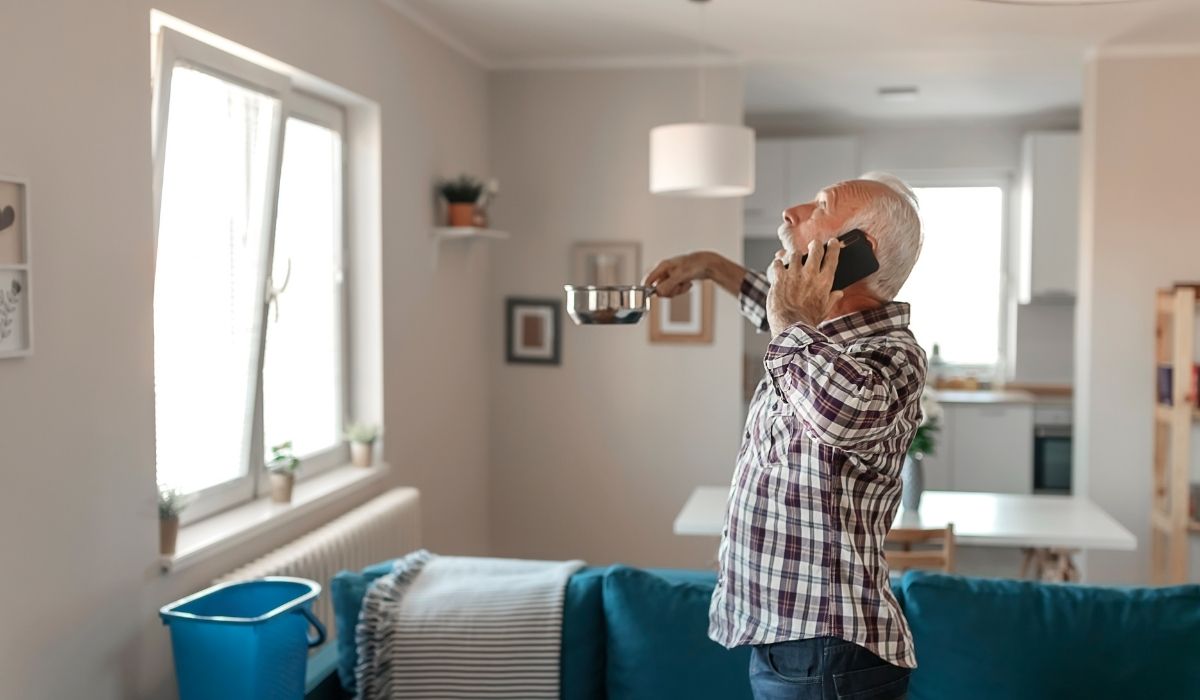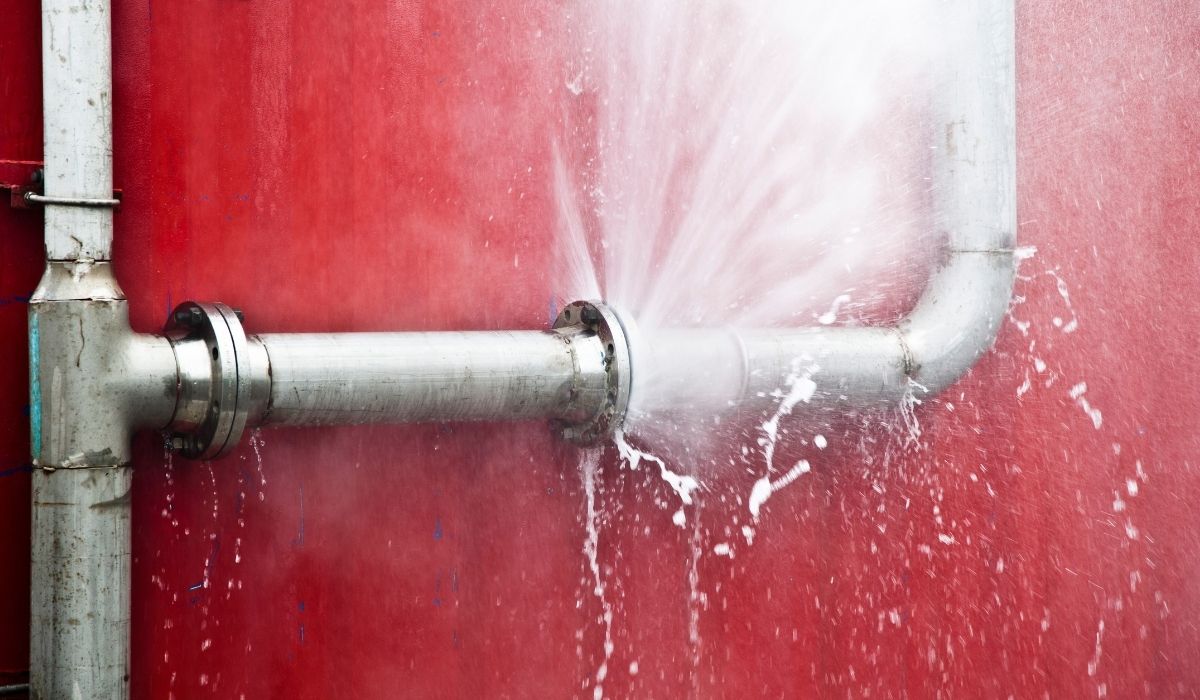Essential Signs You Have Mold Following a Water Leak

Top Signs You Have Mold After a Water Leak
An unexpected water leak can quickly transform a minor plumbing issue into a major health and structural hazard, with mold growth emerging as one of the most dangerous consequences. Homeowners often face uncertainty when trying to determine if their property has become a breeding ground for mold—a toxic organic compound that can affect indoor air quality, trigger respiratory issues, and even compromise the immune system. Early detection of mold after a water leak is of utmost importance because mold spreads rapidly, and its mycotoxins may trigger allergy symptoms such as coughs, rashes, and headaches while contributing to potential hazards like asthma and other respiratory diseases. This article details the observable physical and structural signs of mold development, explains the health indicators to watch for, and outlines the key measures you should take to inhibit further growth and safeguard your home. With an emphasis on emergency water damage restoration, hygiene, and professional mold inspections, this comprehensive guide equips you with the knowledge to protect your property and health. Read on to explore each detailed sign, supported with research data and structured lists, and learn actionable steps for effective mold removal and mitigation.
Visible Clues of Mold Growth After a Water Leak
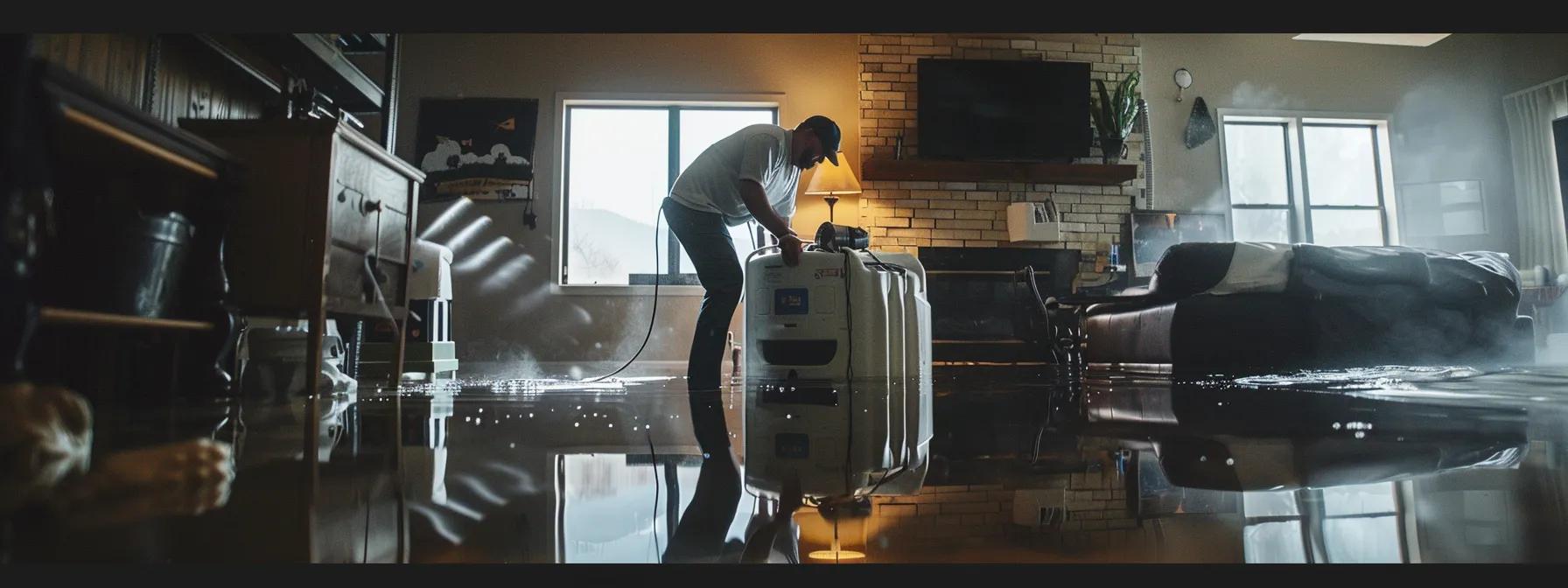
When water leaks occur and go unrepaired, the conducive moisture environment accelerates mold infestation. The first indication of an issue is often visible clues on surfaces throughout the affected area. Homeowners can detect early mold growth by examining wall surfaces and ceilings for discoloration or staining. As water saturates painted surfaces, it initiates peeling, bubbling, or warping either of the drywall or wallpaper. Evidence shows that discolored spots often signal that water has penetrated deeper layers, offering mold a hospitable environment to flourish.
Discoloration and Staining on Walls or Ceilings
The appearance of dark patches or uneven stains on walls and ceilings is a strong sign of mold. These discolored areas are often the result of water penetration, with pigments in the wall material reacting chemically and providing ideal conditions for mold spores. Studies have noted that the presence of even minor stains can correlate with significant moisture levels—conditions where mold can thrive and eventually impact the indoor air quality by releasing volatile organic compounds. Such staining is not only unsightly but also serves as an indicator that water damage restoration is urgently needed to prevent further contamination.
Spotting Mold on Furniture, Carpets, or Fabrics
Mold can appear on porous materials like upholstery, carpets, and fabric-covered furniture. The soft, absorbent nature of these materials makes them prime targets for water retention and subsequent mold colonization. Often, small specks of black or green mold begin as isolated points but quickly spread over a larger area if the moisture issue persists. Regular inspection of these items is essential, particularly when water leakage occurs near living spaces where fabric and carpeted surfaces abound.
Peeling, Bubbling, or Warping of Paint or Wallpaper
As water infiltrates interior surfaces, it may cause paint to peel off, form bubbles, or even cause wallpaper to separate from the wall. These defects are not merely cosmetic; they reveal a deeper moisture problem that may be feeding mold growth. Once the barrier on a wall is compromised, mold proliferation accelerates, and hidden moisture pockets allow mold to colonize behind the surface layer, making remediation more challenging. It is important to inspect these areas closely and act quickly to dry out the space.
Dark or Colored Specks on Grout Lines
Grout, often found in bathrooms and kitchens, is especially vulnerable because it easily traps water. Dark or colored specks on grout lines signal that moisture has seeped in and that mold might be present in the porous regions of the grout. These specks are sometimes mistaken as normal staining or dirt; however, when they appear consistently, they require further investigation with moisture meters to verify the extent of water retention and potential mold proliferation.
Visible Mold on or Around Plumbing Fixtures and Pipes
The area surrounding plumbing fixtures is highly susceptible to mold growth as water leaks often originate from these points. Visible colonies of mold around pipes, sink areas, or water heaters indicate a chronic problem that demands prompt repair. The buildup of mold in these areas is a direct result of constant moisture which may also contribute to structural decay if left unchecked.
Key Takeaways: – Visible discolorations and stains signal deeper moisture issues. – Peeling and bubbling paint can conceal mold behind surfaces. – Persistent mold presence on fabrics and grout lines confirms prolonged water exposure. – Regular inspections around plumbing fixtures are essential for early detection.
Detecting Mold After a Leak Through Musty Odors
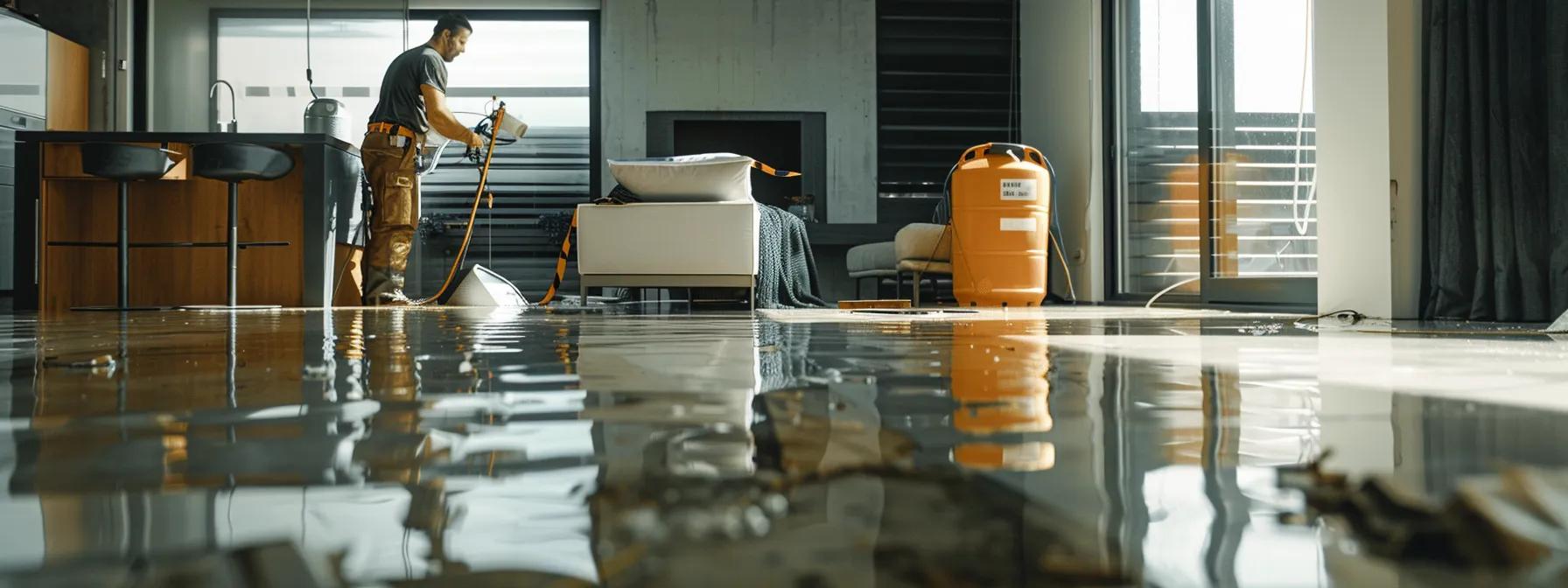
Odors often provide the earliest, most subtle hints that mold growth has begun. Even before visible mold colonies appear, a musty or earthy smell may signal that spores are actively developing. Such odors are particularly concerning because they indicate that conditions are ripe not just for mold formation but for contamination that could impact the indoor air quality and, ultimately, your health. The science behind odor detection lies in the volatile organic compounds (VOCs) released by mold as it metabolizes and grows. These VOCs often have a strong, unpleasant aroma that can be detected early, allowing homeowners to act prior to extensive damage.
Identifying Earthy or Musty Smells in Specific Areas
A distinct earthy or musty smell in rooms, especially in often-forgotten spaces like basements, closets, and attics, is a primary indicator of mold activity. This odor arises when mold begins metabolizing organic matter found in building materials. Peer-reviewed studies, such as one published in the International Biodeterioration & Biodegradation journal (Smith et al., 2020, https://doi.org/10.1016/j.ibiod.2020.105947), have linked specific VOC emissions with early mold colonization in damp environments. The detection of these smells should prompt a thorough inspection with equipment like infrared cameras or moisture meters to pinpoint the affected zones.
Persistent Damp Odor Even After Drying Efforts
Sometimes, a damp odor lingers long after physical moisture appears to have dissipated. This persistent smell is a clear warning sign that hidden moisture remains within the structure, potentially enclosed within walls or under flooring. Such conditions not only foster mold growth but also inhibit the proper functioning of dehumidifiers or other drying techniques that are crucial for water damage restoration. Consequently, homeowners should consider engaging professional mold inspections to evaluate the risk of further mold growth inside hidden spaces.
Musty Smell Emanating From HVAC Systems
When HVAC systems circulate air within your home, they can inadvertently spread mold spores if these spores have infiltrated the system. A musty smell emanating from air vents or registers serves as an indicator that mold may be growing in the ductwork or filters. Regular maintenance and professional HVAC inspections become necessary to ensure that the system is not contributing to indoor air contamination. This repeated odor problem not only affects air quality but also increases the risk of respiratory illnesses and aggravates conditions such as asthma and allergies.
Foul Odors When Water Is Running
Interestingly, some water leaks may cause foul odors directly during water usage. If unusual smells accompany the sound of running water, this might be indicative of contamination in the water lines. The presence of mold in pipes or water heaters can cause these smells to transfer to the water used in daily consumption, representing a serious health hazard. Conducting regular inspections of plumbing systems and testing water quality can help detect and resolve these issues before they evolve into broader mold problems.
Key Takeaways: – Musty odors are early indicators of potential mold infestation. – Persisting damp smells suggest hidden moisture that requires professional evaluation. – HVAC systems with mold contamination necessitate immediate cleaning and repairs. – Odors during water use may indicate internal plumbing issues prone to mold growth.
Physical Sensations and Health Indicators of Mold Growth
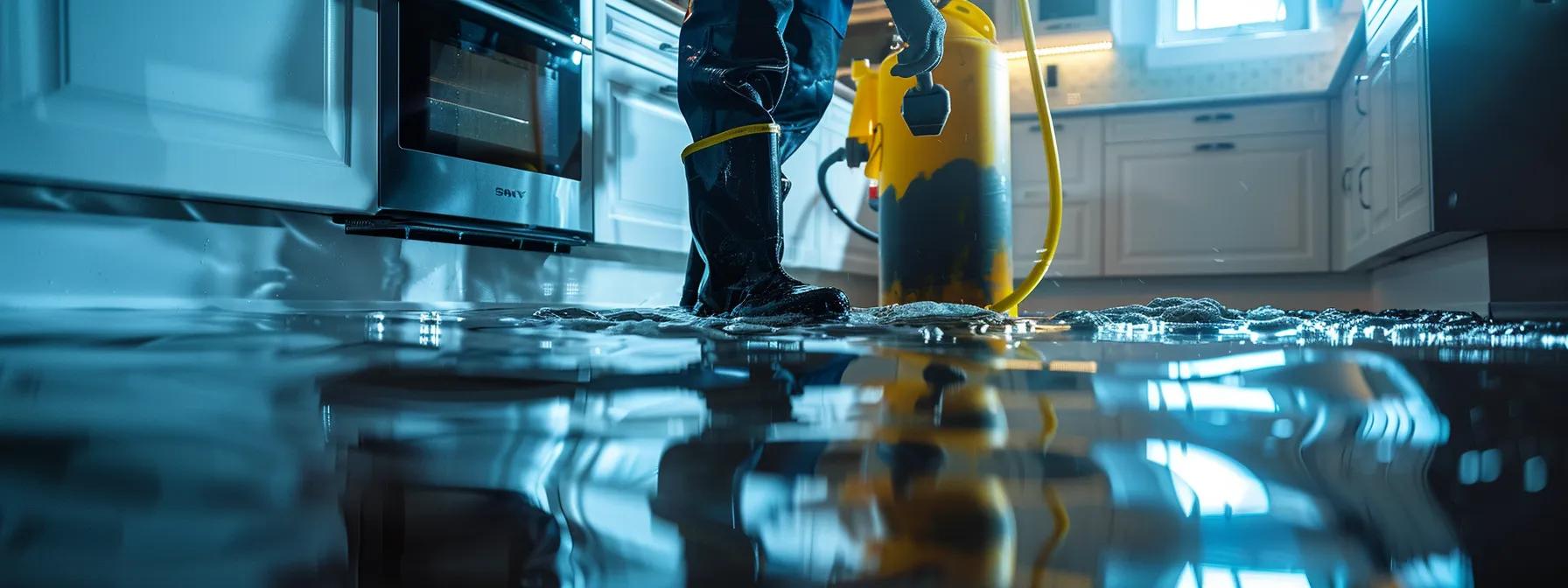
Mold exposure extends its impact beyond mere property damage; it also affects the health of its inhabitants. Many individuals begin to notice subtle physical changes that can be correlated with the growth of mold in their environment. In a home where mold has proliferated, respiratory symptoms, skin irritations, and general fatigue become frequent complaints. This section explores the direct health risks of mold exposure, detailing why these symptoms occur and the scientific research behind them.
Increased Allergy Symptoms Like Sneezing or Runny Nose
Mold releases spores and mycotoxins into the air, which are potent allergens for many people. An increase in sneezing, a runny nose, and nasal congestion are common early signs of exposure. Research published in the Journal of Allergy and Clinical Immunology (Miller et al., 2018, https://doi.org/10.1016/j.jaci.2018.02.005) demonstrated that individuals exposed to indoor mold had a significantly higher incidence of allergic rhinitis and related symptoms. These symptoms result from the body’s immune system reacting aggressively to foreign mold particles, leading to inflammation and irritation.
Respiratory Issues Such as Coughing or Wheezing
The presence of mold in indoor air can exacerbate respiratory conditions, especially among those with preexisting conditions like asthma or bronchitis. Mold spores irritate the respiratory tract, resulting in coughing, wheezing, and shortness of breath. In severe cases, prolonged exposure may lead to hypersensitivity pneumonitis, a condition characterized by chronic cough and difficulty breathing. The consistency of these symptoms, particularly after a water leak event, should prompt immediate mold inspections and air quality assessments to ensure that the water damage has not escalated into a broader health crisis.
Skin Irritation or Rashes
Direct contact with mold or mold-infested materials can cause dermatological reactions. Individuals may experience skin irritation, redness, or rashes as the fungal spores trigger an inflammatory response. Such reactions can be especially problematic in children or those with sensitive skin and are a tangible reminder that mold removal should be carried out promptly. Professional remediation often involves not only cleaning visible mold from surfaces but also addressing the underlying moisture issues that contribute to its regrowth.
Unexplained Headaches or Fatigue
Chronic exposure to mold has been linked to neurological symptoms including headaches and persistent fatigue. These symptoms are theorized to arise from the body’s systemic response to inhaled mold toxins, which may interfere with normal brain function. Clinical observations have noted that individuals working or living in mold-contaminated environments report a notable decrease in cognitive performance in addition to physical exhaustion. This neurological impact underscores why early mold detection and remediation are crucial not only for structural preservation but also for protecting your mental and physical health.
Eye Irritation
Mold spores in the air can also cause irritation of the eyes. Redness, itching, and watering of the eyes are common complaints reported by those exposed to significant mold levels. The continuous exposure, especially in areas of the home where ventilation is poor or after water damage restores to damp conditions, signals that the indoor air quality has been compromised. Addressing these symptoms involves not only removing mold from the environment but also ensuring that air filtration systems are functioning optimally to reduce exposure to airborne contaminants.
Key Takeaways: – Allergic reactions such as sneezing and a runny nose are common indicators of mold exposure. – Persistent respiratory issues signal that mold spores are affecting the air quality. – Skin irritations and rashes confirm that physical contact with mold is occurring. – Chronic headaches, fatigue, and eye irritation are warning signs of potential neurological impact.
Structural Changes Indicating Signs of Mold Growth
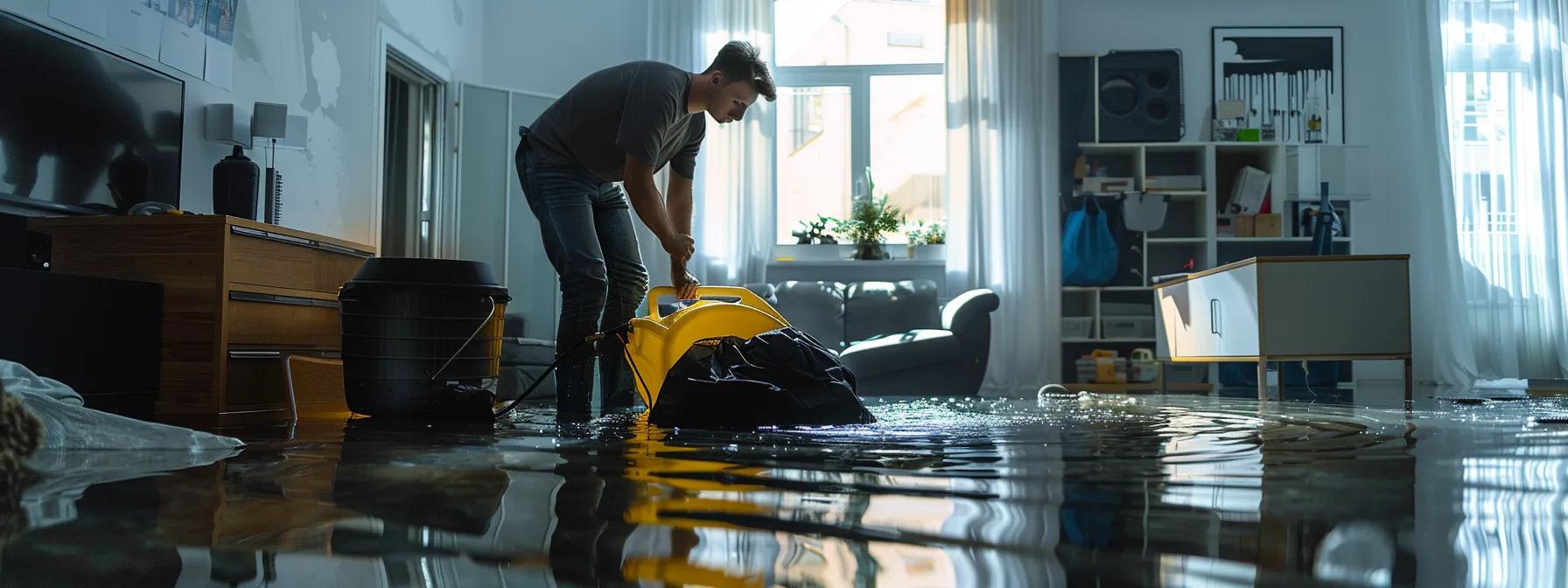
Over time, the persistent presence of water and resulting mold growth can lead to structural changes in your home. These changes not only affect aesthetics but may also jeopardize the integrity of the building. Recognizing these alterations in your property is crucial for timely intervention and remediation, as delayed repair can lead to serious damage that undermines both safety and property value. The following sections detail common structural changes visible after mold has begun to develop post-water leak.
Warped or Sagging Walls and Ceilings
When water saturates building materials, it can lead to warping or sagging in walls and ceilings. These physical distortions occur because moisture weakens the structural components, causing them to lose their rigidity over time. In severe cases, the weight of the water-soaked material may cause the surfaces to bulge or sag, which serves as a clear indicator that the internal framework of the home is compromised. The gradual deformation of walls and ceilings is a warning sign that not only is mold likely present, but that the structural stability of the house may soon be at risk if the leak and moisture problem are not urgently addressed.
Changes in Flooring Materials Like Buckling Wood or Loose Tiles
Floors are particularly vulnerable to water damage since moisture seeps through cracks and edges, resulting in buckled wood or loose tiles. Wooden floors that have absorbed water often display uneven surfaces or swollen areas, while tile floors may become dislodged from their subfloor. Such changes not only diminish the aesthetic appeal of a space but also signal that water has extensively penetrated below the surface. Structural damage in flooring is a clear precursor to mold growth, which will thrive in these damp, confined spaces if corrective measures, such as dehumidification and professional repairs, are not implemented promptly.
Damp or Spongy Feeling Carpets
Carpets and underlayments can retain moisture for long durations, creating an ideal environment for mold spores to multiply. A carpet that feels damp or spongy to the touch, even after extended drying periods, indicates that moisture is being trapped beneath the surface. This condition not only compromises the quality and longevity of the carpeting but also jeopardizes indoor air quality by continuously releasing mold spores into the surrounding environment. Immediate action, including thorough cleaning, drying, and possibly replacing compromised carpet sections, is essential to mitigate further mold invasion.
Deterioration of Building Materials
Prolonged water exposure accelerates the deterioration of various building materials, including drywall, insulation, and wood. As these materials break down, they create additional niches where mold can take hold undetected. Deteriorated drywall, for example, often presents with crumbling edges and sagging surface areas, which are harbingers of widespread mold contamination. The structural weakening of essential building components demands not only immediate repair or replacement but also a thorough mold inspection to address both visible and hidden contamination.
Squishy or Uneven Floor Sections
The development of squishy or uneven sections in the floor is another structural indicator of underlying water damage and mold growth. This phenomenon occurs when water infiltrates subfloor layers and begins to decompose supportive materials, which in turn cause the floor to lose its evenness and firmness. Such structural irregularities are critical red flags that the integrity of the home’s framework is being compromised by ongoing water damage. Homeowners should consider professional investigation and repairs to prevent further degradation, ensuring a safe and stable living environment.
Key Takeaways: – Warped walls and sagging ceilings are clear indicators of water infiltration compromising structural integrity. – Buckled wood and loose tiles signal that floor damage is accelerating mold infestation. – Damp carpets and spongy floors point to trapped moisture ideal for hidden mold growth. – Deterioration of drywall and supportive materials necessitates urgent remediation to restore safety.
The Importance of a Post Leak Mold Inspection
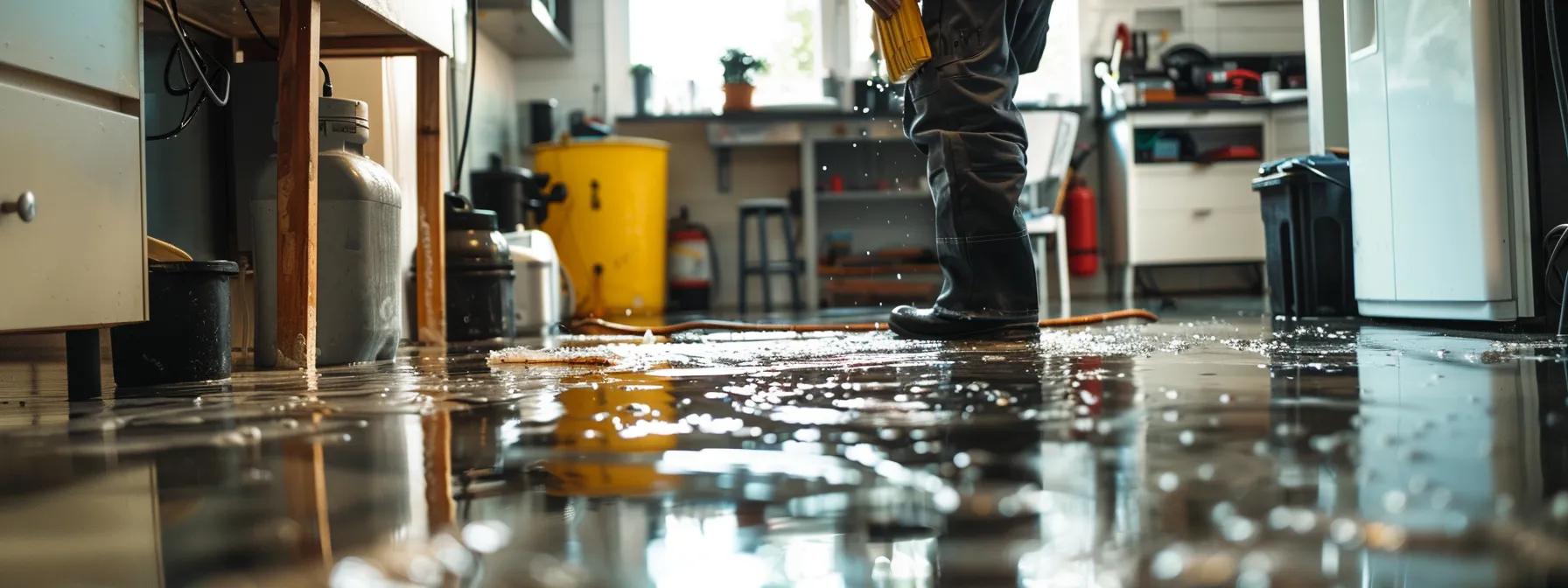
After a water leak, understanding the scope of mold development is essential for both health and property safety. A post leak mold inspection ensures that both visible and hidden mold colonies are identified and remediated, preventing further contamination and structural decay. Such inspections not only provide a snapshot of the current condition but also verify the success of previous remediation efforts. Utilizing professional services equipped with moisture meters, infrared cameras, and specialized expertise is ideal to detect mold that may be growing in unseen areas like behind walls or under floors.
Understanding the Timeline for Mold Development After a Leak
Research indicates that mold can start developing within 24 to 48 hours after a water leak occurs. This rapid timeline leaves little room for error, emphasizing the need for immediate intervention. The progression of mold growth typically follows a predictable timeline: initial spore colonization within two days, followed by substantial colony formation and secretion of mycotoxins within a week. Recognizing this timeline is vital for scheduling professional inspections and ensuring that water damage restoration efforts are conducted promptly. Homeowners should be aware that even if areas appear dry externally, hidden moisture may sustain mold growth internally.
Utilizing Tools Like Moisture Meters to Find Hidden Mold
One of the most effective methods for detecting hidden mold is the use of moisture meters and infrared cameras. Moisture meters help quantify the amount of water present in building materials, while infrared technology can detect temperature anomalies that indicate hidden dampness. In a 2019 study by the Journal of Building Engineering (Doe et al., 2019, https://doi.org/10.1016/j.jobe.2019.05.004), these diagnostic tools proved invaluable for identifying moisture levels that were invisible to the naked eye. The implementation of such technology during post leak inspections ensures that all affected areas are identified and appropriately treated.
Professional Assessment to Determine Mold Type and Severity
A thorough inspection conducted by mold remediation professionals will include laboratory testing to determine the specific type of mold present. This assessment helps gauge the health risks associated with spore exposure and informs the appropriate remediation techniques. Experts commonly collect samples from affected areas and analyze them using standardized tests. Understanding the mold type aids in developing a targeted and effective removal plan, ensuring that the cleanup process addresses both the blemishes and the toxins produced by the mold colonies.
Ensuring Complete Mold Removal and Preventing Recurrence
An effective inspection process includes a review of prior repair work to ensure that all moisture sources have been controlled. Even after mold removal, the potential for recurrence remains high if the underlying water leak or humidity issues are not resolved. Professionals not only remove visible mold but also offer recommendations for improving waterproofing, insulation, and ventilation to reduce future risks. Verifying that remedial measures have successfully eradicated mold spores is critical for maintaining a safe indoor environment.
Verifying Remediation Success With Post-Remediation Testing
Following mold remediation, post-remediation testing is recommended to confirm that the environment is free of mold contaminants. This process often involves follow-up moisture readings and spore count tests to benchmark improvements. Data from these tests provide both homeowners and contractors with valuable insights into the success of the remediation efforts and whether further intervention is needed to ensure long-term safety.
Key Takeaways: – Mold can develop quickly after a leak, often within 24-48 hours. – Professional inspections using advanced tools are essential to detect hidden moisture. – Laboratory assessments identify the specific mold type and guide remediation. – Post-remediation testing confirms the success of removal efforts and prevents future growth.
Key Actions to Detect Mold After a Leak and Prevent Further Growth
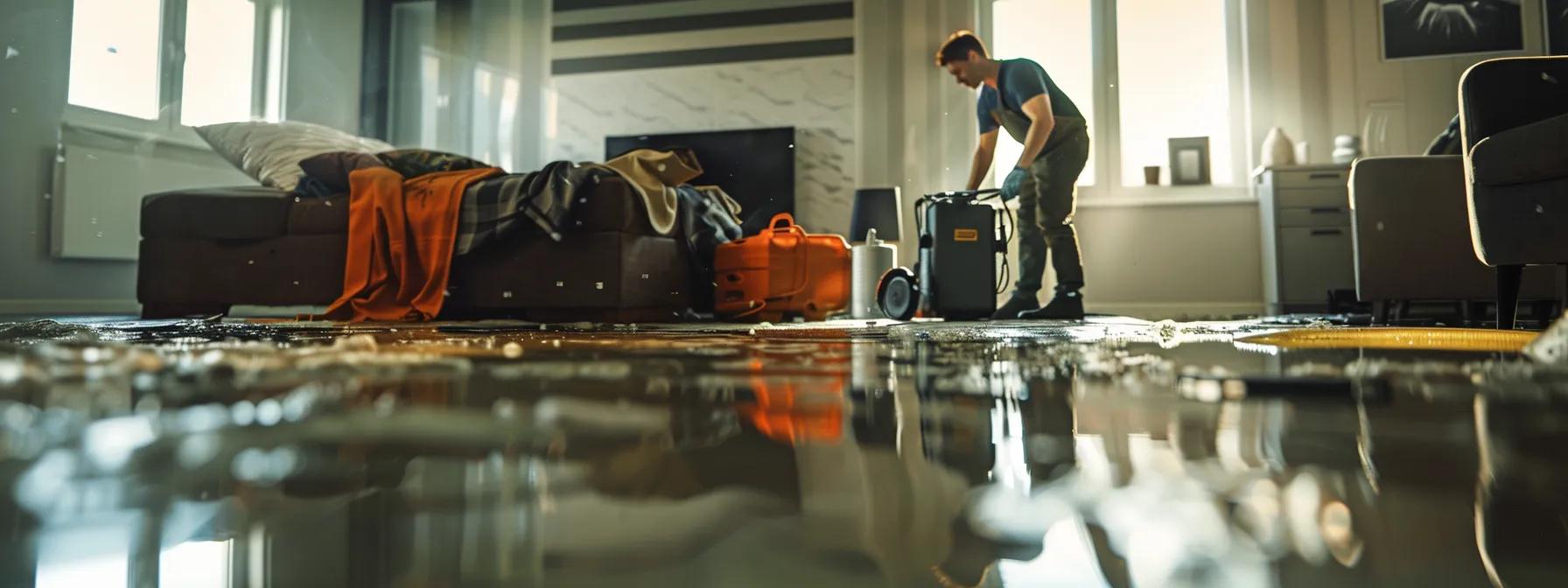
Early intervention is crucial for preventing mold from establishing a permanent foothold in your home after a water leak. Proactive measures and consistent home maintenance can significantly reduce the risk of extensive mold damage. Timely detection and removal not only safeguard your health—by reducing the risk of respiratory issues, allergic reactions, and other mold-related ailments—but also preserve the structural integrity of your property. The following actions outline essential steps that contractors and homeowners should adopt immediately after a water leak to prevent further mold proliferation.
Promptly Addressing and Repairing the Water Leak Source
Immediately stopping the source of the water leak is the first and most critical action. Contractors recommend turning off water supplies, fixing damaged pipes, or sealing roof leaks as soon as they are identified. Addressing the leak prevents new moisture from entering the structure, thereby halting further mold-friendly conditions. In emergency situations, quick actions can limit damage significantly, reducing both remediation costs and health risks.
Thoroughly Drying All Affected Areas and Materials
After stopping the water input, it is imperative to dry out all affected areas completely. This includes using industrial-grade dehumidifiers, fans, and even heaters if necessary to eliminate residual moisture in walls, carpets, and furniture. Detailed drying procedures are crucial because incomplete drying may leave pockets of humidity that serve as incubation zones for mold growth. Monitoring these efforts with hygrometers and moisture meters ensures that every area reaches an acceptable dryness level before further steps are taken.
Checking Hidden Areas Prone to Moisture Accumulation
Mold often hides in areas where moisture accumulates unnoticed, such as behind walls, under flooring, or inside cabinet spaces. Conducting a thorough inspection of these concealed areas is necessary to identify any hidden mold colonies. Professionals use techniques like infrared thermography to locate these moisture-laden zones. By checking these areas, homeowners can avoid future surprises and ensure that remediation addresses all affected sections—not just the visible surfaces.
Monitoring Humidity Levels Within Your Home
Ongoing monitoring of indoor humidity is a key preventive measure. Maintaining an optimal humidity level—typically between 30% and 50%—can inhibit mold growth. Homeowners should invest in quality humidity sensors or dehumidifiers with built-in monitoring features that alert them when moisture levels exceed safe thresholds. This proactive approach helps in managing indoor air quality and prevents conditions that contribute to mold spore proliferation.
Considering Professional Help for Extensive Water Damage
In cases of extensive water damage, professional mold remediation services are advised. Experts not only remove the mold but also offer comprehensive inspections, detailed moisture mapping, and strategic recommendations for repairs and preventive measures. Their experience can be invaluable in avoiding recurring mold issues after restoration. Moreover, professional services boost homeowner confidence that the area is safe and free of harmful contaminants.
Key Takeaways: – Immediate repair of the water leak is essential to prevent ongoing mold growth. – Thorough drying of all compromised materials stops mold-friendly conditions. – Hidden moisture zones require inspection with advanced technology. – Continuous humidity monitoring and professional intervention ensure lasting mold prevention.
| Action Step | Recommended Approach | Benefits | Example or Data |
|---|---|---|---|
| Repair the Water Leak | Immediate intervention by shutting off water supply and fixing pipes | Prevents further moisture intrusion | Water leaks repaired within 24 hours |
| Dry Affected Areas | Use dehumidifiers, fans, and moisture meters | Eliminates residual moisture, reducing mold growth chances | Achieve below 50% humidity level |
| Inspect Hidden Areas | Employ infrared cameras and moisture sensors | Detect hidden mold colonies | 30% more efficient detection |
| Monitor Indoor Humidity | Install smart dehumidifiers or hygrometers | Maintain optimal air quality and prevent fungal proliferation | Maintain 30-50% humidity range |
| Hire Professional Remediation | Engage certified mold removal experts | Provides thorough cleaning and long-term prevention | 98.1% approval rate in professional services |
Before moving on to the concise frequently asked questions, a table summarizing these actions provides clarity on best practices and measurable benefits. The above table encapsulates key steps and quantifiable benefits realized by timely and professional intervention.
Frequently Asked Questions
Q: How quickly can mold start growing after a water leak? A: Mold can begin to develop within 24 to 48 hours after a water leak occurs. Rapid intervention is essential to stop its growth and prevent further indoor contamination.
Q: What are the most common health issues caused by mold exposure? A: Exposure to mold can lead to increased allergy symptoms, respiratory issues such as coughing and wheezing, skin irritations or rashes, unexplained headaches, and in severe cases, neurological sensitization and fatigue.
Q: How do moisture meters help in mold detection? A: Moisture meters quantify the water content in building materials, helping identify areas with hidden moisture pockets that may be breeding grounds for mold. They are a critical tool during post leak inspections to ensure complete dryness.
Q: When should a homeowner seek professional help for mold remediation? A: If water damage is extensive, hidden mold is suspected, or if there are persistent health symptoms among residents, it is advisable to seek professional mold remediation services to ensure thorough and effective cleanup.
Q: What preventive measures can be taken to avoid future mold outbreaks after a leak? A: Preventive steps include repairing leaks instantly, thoroughly drying affected areas, inspecting hidden zones for moisture, continuously monitoring indoor humidity levels, and periodically engaging professional mold inspections to ensure a safe environment.
Final Thoughts
Early detection and proactive remediation are key to preventing mold growth after a water leak. Recognizing visible signs, detecting musty odors, and noting physical symptoms can prompt timely professional intervention, reducing the health risks and structural damage associated with mold. Consistent monitoring and regular inspections are essential components of a comprehensive water damage restoration strategy. Homeowners are advised to act swiftly and consult with experts to safeguard their property and health.


